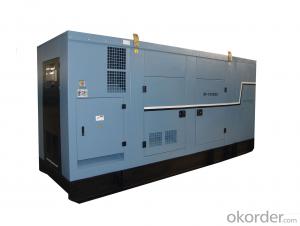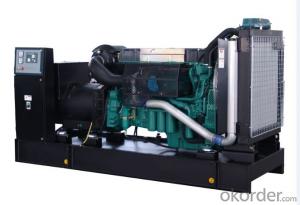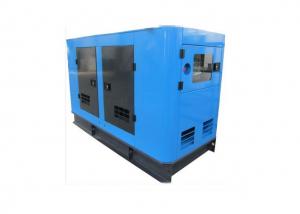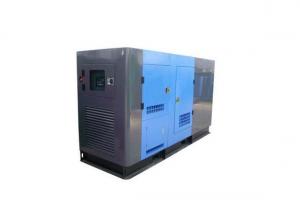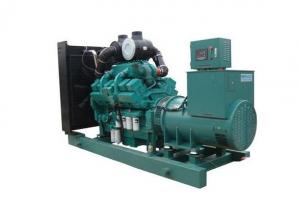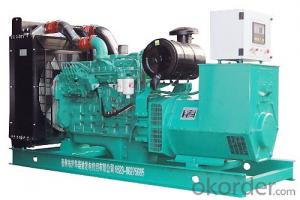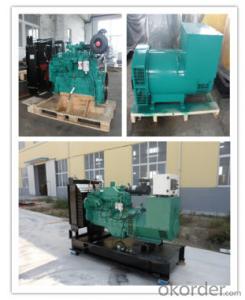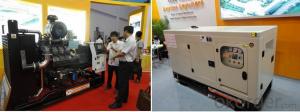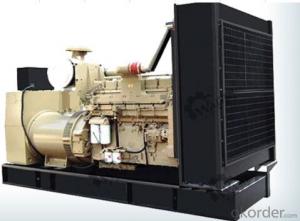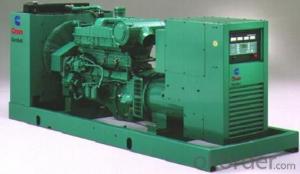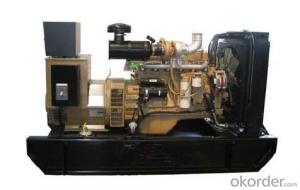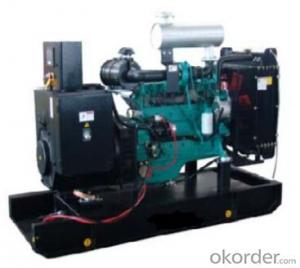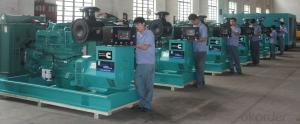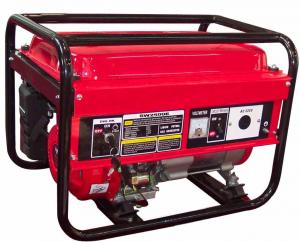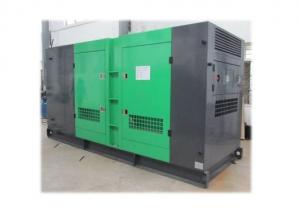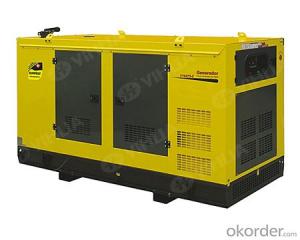Diesel Generator Cummins 300kw/375kva
- Loading Port:
- Shanghai
- Payment Terms:
- TT OR LC
- Min Order Qty:
- 1 unit
- Supply Capability:
- 100 unit/month
OKorder Service Pledge
OKorder Financial Service
You Might Also Like
Product Description
A diesel generator is the combination of a diesel engine with an electric generator (often an alternator) to generate electrical energy. This is a specific case of engine-generator. A diesel compression-ignition engine often is designed to run on fuel oil, but some types are adapted for other liquid fuels or natural gas.
Diesel generating sets are used in places without connection to a power grid, or as emergency power-supply if the grid fails, as well as for more complex applications such as peak-lopping, grid support and export to the power grid.
Main Product Features:
General Features: Engine (CCEC Cummins NTAA855-G7)
Radiator 40OC max, fans are driven by belt, with safety guard
24V charge alternator
Alternator: single bearing alternator IP23, insulation class H/H
Absorber
Dry type air filter, double fuel filter, oil filter, coolant filter
Main line circuit breaker
Standard control panel
Two12V batteries, rack and cable
Ripple flex exhaust pipe, exhaust siphon, flange, muffler
User manual
Product Specifications:
1. Manufacturer / Model: CCEC Cummins NTAA855-G7, 4-cycle
2. Air Intake System: Turbo, Air/Air Cooling
3. Fuel System: PT type fuel pump, EFC
4. Cylinder Arrangement: 6 in line
5. Displacement: 14L
6. Bore and Stroke: 140*152(mm)
7. Compression Ratio: 14.0:1
8. Rated RPM: 1500rpm
9. Max. Standby Power at Rated RPM: 377KW/513HP
10. Governor Type: Electronic
FAQ:
Q1: What is Prime Power and Standby Power Rating?
A1: Prime Power (PRP): Prime power is available for an unlimited number of annual hours in variable load application, in accordance with GB/T2820-97(eqv ISO8528); A 10% overload capability is available for a period of 1 hour within a 12-hour period of operation. Standby Power Rating (ESP): The standby power rating is applicable for supplying emergency power for the duration of a utility power interruption. No overload, utility parallel or negotiated outage operation capability is available at this rating
Q2: How do we guarantee the quality of our products?
A2: We have established an advanced quality management system which conducts strict quality tests at every step, from raw materials to the final product.
Q3: How soon can we receive the product after purchase?
A3: Within three days of placing an order, we will begin production. The specific shipping date is dependent upon international and government factors, but is typically 30 to 40 workdays.
Q4: What is your after sales service?
A4: CNBM provides a full line of brand new and high quality products. Each and every unit is strictly factory tested. Warranty is according to our standard conditions: a, 15 months, counted on the day CNBM sold to the first buyer; b, One year after installation; c, 1000 running hours (accumulated); subject to the earlier one. Service and parts are available from CNBM or distributors in your location.
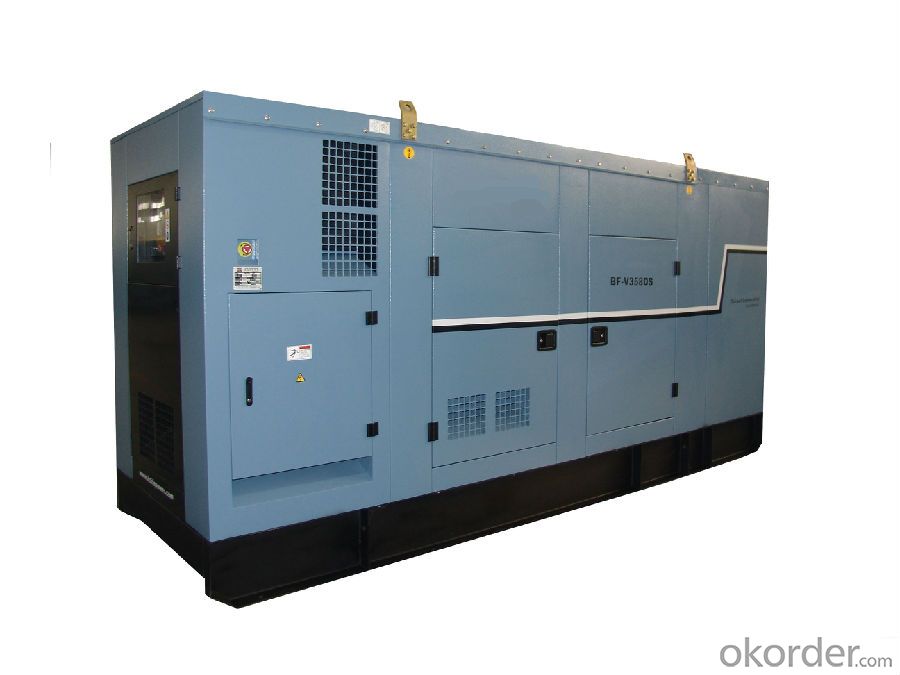
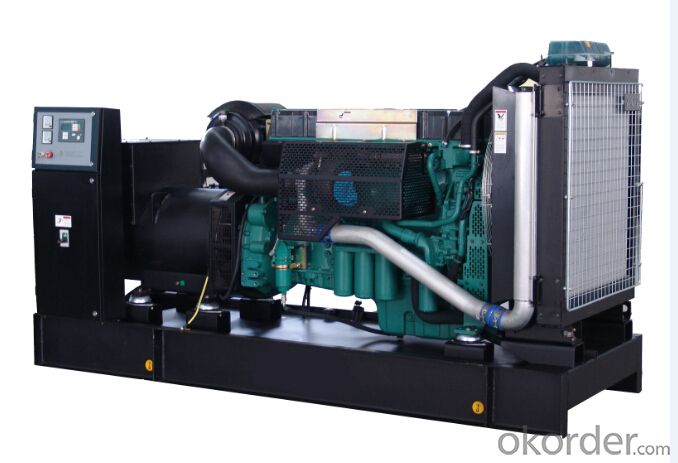
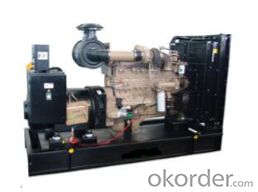
- Q: I'd like to convert some old cars and have them run like gangbusters.
- You really need a new engine altogether, one designed to reliably run while providing the high compression ratios like 22:1 necessary to support combustion of diesel or other oils. Gasoline engines are only good for 10:1 compression these days. If the car is already a regular diesel car, I believe all you need is some additional fuel filtering to run on so called bio diesel.
- Q: can somebody explain to me electrical power distribution for jackup rigstarting from the engine to generator then bus,MCC1,MCC2,SCR
- Nice to have your Q, i am also a Jack up Rig Design Engineer. Ok. see 1st of Jackup rigs have diesel generators which provide power supply for the various electrical power requirements on rig. usually the voltage level is 6.6kV, 4.16kV, 690V or 600 V which is then further reduced upto 415V, 220V/127V as per load and client requirements since it affects the design and overall space required and size of rig as well. the generated power is 1st transferred to the main PMCC or MCC known as generator switchboards. from here the power is dirtributed to various other switchboards such as jacking MCC, drilling MCC, Ventilation MCCs, VFD panels (for top drive mud pump panels through VFD/SCR system) and other MCCs for other electrical loads. voltage is further reduced upto 415V/220V/127V for lighting and other lv loads using dry type transformers. oil filled trafos are not preferred since they r bulky and not feasible to have them on rigs since its in sea and also problem in maintenance. cables used are usually of XLPE or XLPO insulation. the configuration is as follows CU/XLPE or XLPO/Inner sheath (SHF)/Armour/Outer sheath (SHF), the inner and outer sheath has to be low smoke halogen free material, armour is usually bronze wire armour, usually cables used are all flame proof as per iec 60332, cat 3-22A and cables for emergency purposes are fire resistant as per iec 60331. hope this is fine.
- Q: Hi. I'm thinking about getting a Kubota Diesel Generator. I have read in many places that the Kubota Diesel engine is the gold standard of Diesel engines. So I'm not worried about that. What i need to know is this, is the generator as a whole dependable? Will over loading it for a few short seconds when the AC compressor kicks in burn it out or shorten its life?Any other insight would be appreciated.Thanks for your answers
- Kubota diesel plants are being used more and more in industry, replacing some of the old standbys like Kohler, Perkins and even Caterpillar in lighter applications. I don't think you will regret buying a Kubota.
- Q: i means what's happen in diesel generator while just switch on ?
- Depends whether it is a battery start or air pressure start. If it's started with a battery, the starter cranks the engine with an electric starter. If it is air started, a solenoid valve is energized, or a hand valve is opened to allow the air pressure to crank the engine with an air turbine. That's the first occurance. There is a definite start-up sequence, in the event the engines fails to start within a given time frame.
- Q: Every time i go to the pawn shop i always end up craping my pants. I crap em so hard that i got to leave to change and come right backnext time i best bring a diaper because the pawn shop always does it to me. Everything is pretty much stolen and new so i get 50% off pawn price because they know me for years.The last time i craped my pants was when i got this really nice 2000$ diesel generator for 400$ and BAM!Didn't even feel it coming, reached in my pocket to count my cash and the next thing i knew was i got a landslide running down my leg filling up my work boot. I bought it there and then anyways with crap on my leg because it was too good a deal to let some other guy steal it, that's my job!I do it at home on the computer sometimes when i'm looking at tools on harborfreight. It never happens with anything else, why only tools?
- Got the same problem with post-order brides.
- Q: hi,Thanks for your help in advance,Need more information on recent trends in applications of DC shunt generator. Kindly help.thank you
- Dc Generator Uses
- Q: A concert is in the works to raise money to help save the Everglades in Florida. I am looking to get as many people interested in the cause as possible. So what would make you want to go to this concert? Bands, the host, food, activities, location, day/night, etc.
- For everyone to be required to bring some kind of rhythm instrument and have the world's largest audience participation with Gloria Estefan or Santana or some other Latin beat. Also, child friendly and family friendly.
- Q: i read alot, maybe them all, but i cant understand how yachts work or get their power from. Please help !!
- Most non-sailboat yachts longer than 40 feet (and up to 300 feet or more) are diesel powered using one or several large Caterpillar, Man, John Deere, Detroit or other similar large diesel engines. A yacht shorter than 40 feet is often gasoline powered. None are battery powered. All large yachts have diesel generators which are used to generate electric power for the onboard electrical systems. When a yacht is docked it usually obtains power from the shore using a large cable that connects to shore power supply systems. Yachts with sails usually also have a single small diesel engine that allows them to maneuver in harbors and other places where sailing might be dangerous or impossible.
- Q: I want to build a diesel engine driven generator. The type of gen I have is asynchron, 400/690 V, 7,5 kW, 9,4 kVA and I was told that I need to stimulate it with capacitors (the unit is supposed to work without connection to a public netstand-aloneisland-service). Who can give me instructions how to do the el. part, size/type of capacitors etc?
- Because it lacks a separate field circuit, an induction generator cannot produce reactive power. In fact, it consumes reactive power, and an external source of reactive power must be connected to it at all times [1]. So you are right that you will need a three-phase capacitor bank at the output terminals (delta-connected). How to size the capacitors? That depends on a few things. Namely what kind of loads are going to be attached to it. I presume this is going to be an emergency generator operating alone (most induction generators are used this way nowadays). In that case, your capacitor bank will need to account for the generator consuming reactive power and the loads consuming reactive power. So, if you know what you are going to connect to the generator, figure up an estimate of the total reactive power of your loads. Then estimate how much reactive power your generator consumes (not sure how to do this; maybe estimate from your 7.5kW and 9.4kVA ratings?). Finally, to size your capacitors equate the total power consumed by gen and loads to this formula: estimated_3phase_power_consumed 3*(line-to-line_volt)^2/X where X 1/(2*pi*freq*C) Solve for C and there you go. My source indicates that the output voltage for an induction generator can vary quite a bit with varying inductive load, so bear that in mind and maybe oversize the caps a bit. Also, the types of capacitors should be able to withstand AC obviously and be rated within your expected operating temp, etc, etc. Good luck.
- Q: Example 1:A GP38-2 has a 2000 HP prime mover diesel engine.What are the horsepower ratings of the electric motors geared to the axle? [4 electric motors; 1 on each axle how much HP?]Example 2:An SD38-2 has a 2000 HP prime mover diesel engine.What are the horsepower ratings of the electric motors geared to the axle? [6 electric motors; 1 on each axle how much HP?]I know the tractive effort of the SD unit would be higher, but with 2 more motors on the axles, does it have more horsepower also?
- An electric locomotive is just that - electric. A diesel locomotive is in effect a mobile power station, consisting of a large, heavy diesel engine driving an equally-large and heavy generator or alternator to provide power for what is actually an electric locomotive. For the same power output, an electric locomotive is almost half the weight. For higher speeds, higher power output is needed, meaning diesel locomotives need even-bigger engines and generators, which makes the locomotive heavier, which requires a bigger engine and so on. The fact is - with current technology - the diesel locomotive has just about reached the limit of its development with regard to speed.
Send your message to us
Diesel Generator Cummins 300kw/375kva
- Loading Port:
- Shanghai
- Payment Terms:
- TT OR LC
- Min Order Qty:
- 1 unit
- Supply Capability:
- 100 unit/month
OKorder Service Pledge
OKorder Financial Service
Similar products
Hot products
Hot Searches
Related keywords
